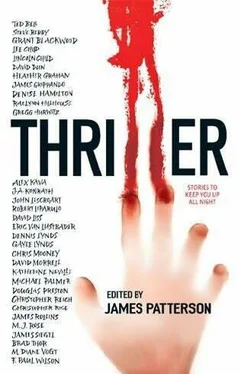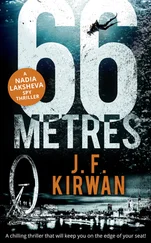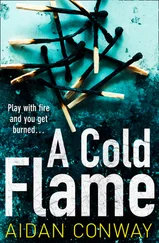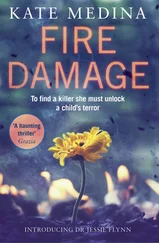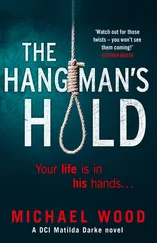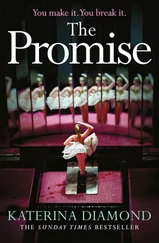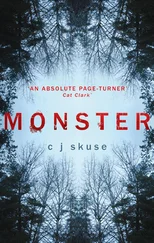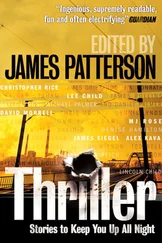The penalty for violating the Abelard sanction was ultimate. If any operative harmed any other operative in an Abelard safe house, the violator was immediately declared a rogue. All members of all agencies would hunt the outcast and kill him or her at the first opportunity, regardless if the transgressor belonged to one's own organization. Because Abelard's original sanctuary was in a church, the framers of the Abelard sanction decided to continue that tradition. They felt that, in a time of weakening moral values, the religious connection would reinforce the gravity of the compact. Of course, the representative from the NKVD was skeptical in this regard, religion having been outlawed in the USSR, but he saw no harm in allowing the English and the Americans to believe in the opiate of the masses.
During the Second World War and the escalating tensions of the subsequent cold war, Abelard sanctuaries proved so useful that new ones were established in Bangkok, Singapore, Florence, Melbourne, Ferlach, Austria and Santa Fe, New Mexico. The latter was of special note because the United States representative to the 1938 Abelard meeting doubted that the sanction could be maintained. He insisted that none of these politically sensitive, potentially violent sites would be on American soil. But he turned out to be wrong. In an ever more dangerous world, the need for a temporary refuge became greater. In a cynical profession, the honor and strength of the sanction remained inviolate.
Santa Fe means Holy Faith. Abelard would approve, Saul Gris-man thought as he guided a nondescript rented car along a dusk-shadowed road made darker by a sudden rainstorm. Although outsiders imagined that Santa Fe was a sun-blistered, lowland, desert city similar to Phoenix, the truth was that it had four seasons and was situated at an altitude of seven thousand feet in the foothills of a range of the Rocky Mountains known as Sangre de Cristo (so-called because Spanish explorers had compared the glow of sunset on them to what they imagined was the blood of Christ). Saul's destination was toward a ridge northeast of this artistic community of fifty thousand people. Occasional lightning flashes silhouetted the mountains. Directions and a map lay next to him, but he had studied them thoroughly during his urgent flight to New Mexico and needed to stop only once to refresh his memory of landmarks that he'd encountered on a mission in Santa Fe years earlier. His headlights revealed a sign shrouded by rain: Camino de la Cruz, the street of the cross. Fingers tense, he steered to the right along the isolated road.
There were many reasons for an Abelard safe house to have been established near Santa Fe. Los Alamos, where the atomic bomb was invented, was perched on a mountain across the valley to the west. Sandia National Laboratories, a similar research facility important to U.S. security, occupied the core of a mountain an hour's drive south near Albuquerque. Double agent Edward Lee Howard eluded FBI agents at a sharp curve on Corrales Street here and escaped to the Soviet Union. Espionage was as much a part of the territory as the countless art galleries on Canyon Road. Many of the intelligence operatives stationed in the area fell in love with the Land of Enchantment, as the locals called it, and remained in Santa Fe after they retired.
The shadows of pinon trees and junipers lined the potholed road. After a quarter mile, Saul reached a dead end of hills. Through flapping windshield wipers, he squinted from the glare of lightning that illuminated a church steeple. Thunder shook the car as he studied the long, low building next to the church. Like most structures in Santa Fe, its roof was flat. Its corners were rounded, its thick, earth-colored walls made from stuccoed adobe. A sign said, Monastery of the Sun and the Moon. Saul, who was Jewish, gathered that the name had relevance to the nearby mountains called Sun and Moon. He also assumed that in keeping with Santa Fe's reputation as a New Age, crystal-and-feng-shui community, the name indicated this was not a traditional Catholic institution.
Only one car, as dark and nondescript as Saul's, was in the parking lot. He stopped next to it, shut off his engine and headlights, and took a deep breath, holding it for a count of three, exhaling for a count of three. Then he grabbed his over-the-shoulder travel bag, got out, locked the car and hurried through the cold downpour toward the monastery's entrance.
Sheltered beneath an overhang, he tried both heavy-looking wooden doors but neither budged. He pressed a button and looked up at a security camera. A buzzer freed the lock. When he opened the door on the right, he faced a well-lit lobby with a brick floor. As he shut the door, a strong breeze shoved past him, rousing flames in a fireplace to the left. The hearth was a foot above the floor, its opening oval in a style known as kiva, the crackling wood leaning upright against the back of the firebox. The aromatic scent of pinon wood reminded Saul of incense.
He turned toward a counter on the right, behind which a young man in a priest's robe studied him. The man had ascetic, sunken features. His scalp was shaved bare. "How may I help you?"
"I need a place to stay." Saul felt water trickle from his wet hair onto his neck.
"Perhaps you were misinformed. This isn't a hotel."
"I was told to ask for Mr. Abelard."
The priest's eyes changed focus slightly, becoming more intense. "I'll summon the housekeeper." His accent sounded European but was otherwise hard to identify. He pressed a button. "Are you armed?" "Yes."
The priest frowned toward monitors that showed various green-tinted night-vision images of the rain-swept area outside the building: the two cars in the parking lot, the lonely road, the juniper-studded hills in back. "Are you here because you're threatened?"
"No one's pursuing me," Saul answered.
"You've stayed with us before?"
"In Melbourne."
"Then you know the rules. I must see your pistol."
Saul reached under his leather jacket and carefully withdrew a Heckler & Koch 9mm handgun. He set it on the counter, the barrel toward a wall, and waited while the priest made a note of the pistol's model number (P2000) and serial number.
The priest considered the ambidextrous magazine and slide release mechanisms, then set the gun in a metal box. "Any other weapons?"
"A HideAway knife." Modeled after a Bengal tiger's claw, the HideAway was only four inches long. Saul raised the left side of his jacket. The blade's small black grip was almost invisible in a black sheath parallel to his black belt. He set it on the counter.
The priest made another note and set the knife in the box. "Anything else?"
"No." Saul knew that a scanner built into the counter would tell the priest if he was lying.
"My name is Father Chen," a voice said from across the lobby.
As thunder rumbled, Saul turned toward another man in a priest's robe. But this man was in his forties, Chinese, with an ample stomach, a round face and a shaved scalp that made him resemble Buddha. His accent, though, seemed to have been nurtured at a New England Ivy League university.
"I'm the Abelard housekeeper here." The priest motioned for Saul to accompany him. "Your name?" "Saul Grisman." "I meant your code name." "Romulus."
Father Chen considered him a moment. In the corridor, they entered an office on the right, where the priest took a seat behind a desk and typed on a computer keyboard. He read the screen for a minute, then again looked at Saul, appearing to see him differently. "Romulus was one of the twins who founded Rome. Do you have a twin?"
Saul knew he was being tested. "Had. Not a twin. A brother of sorts. His name was…" Emotion made Saul hesitate. "Chris."
"Christopher Kilmoonie. Irish." Father Chen gestured toward the computer screen. "Code name Remus. Both of you were raised in an orphanage in Philadelphia. The Benjamin Franklin School for Boys. A military school."
Читать дальше
